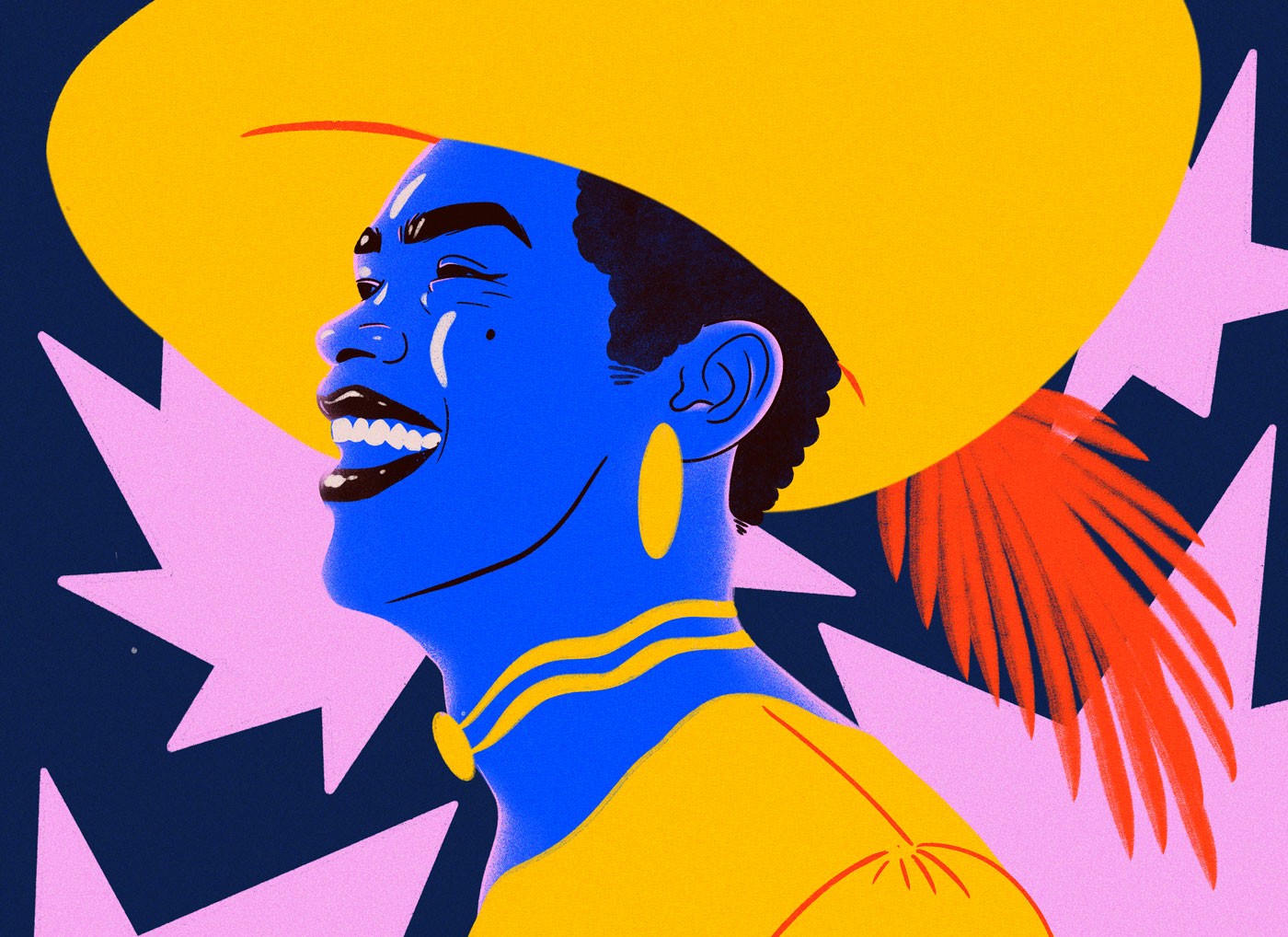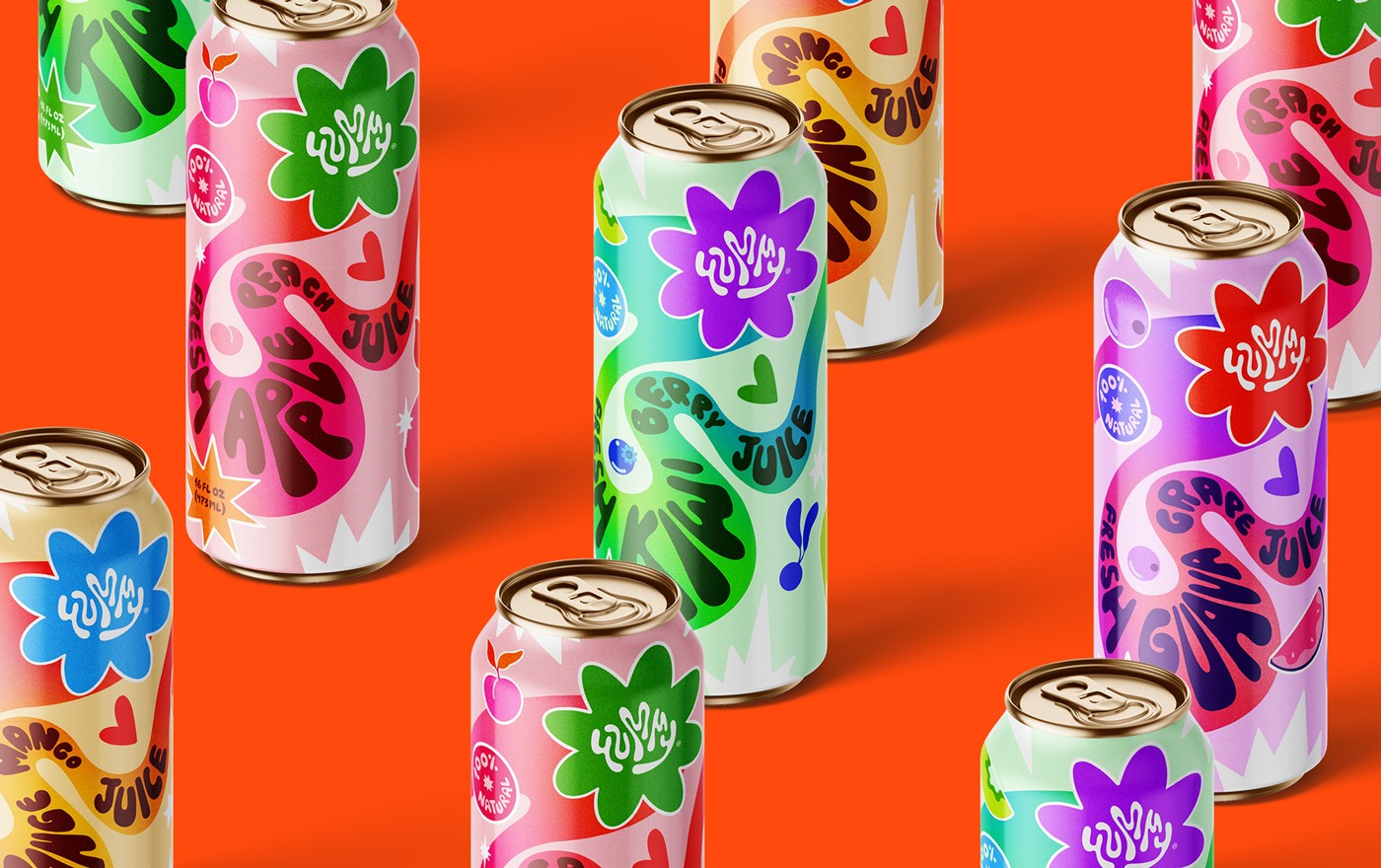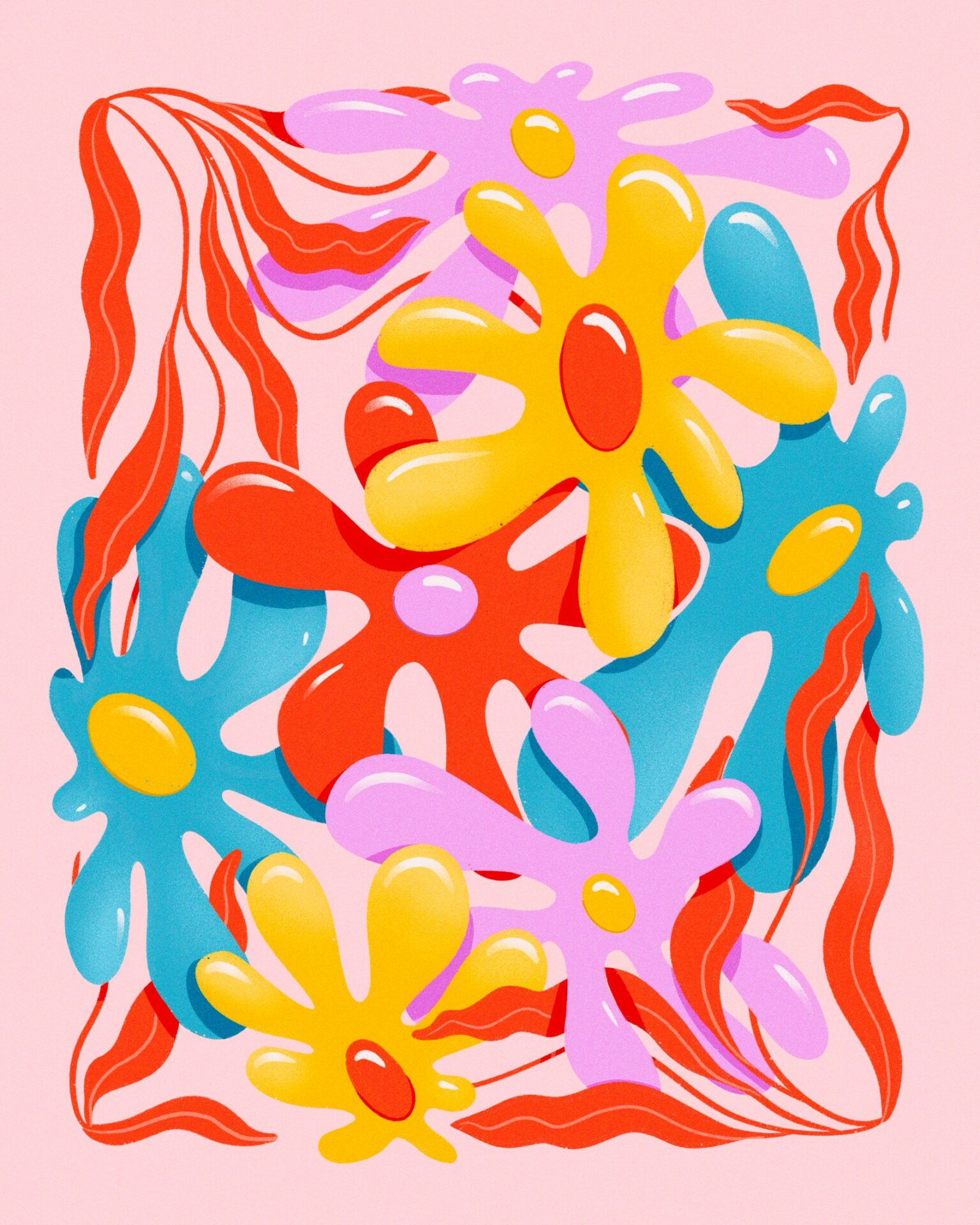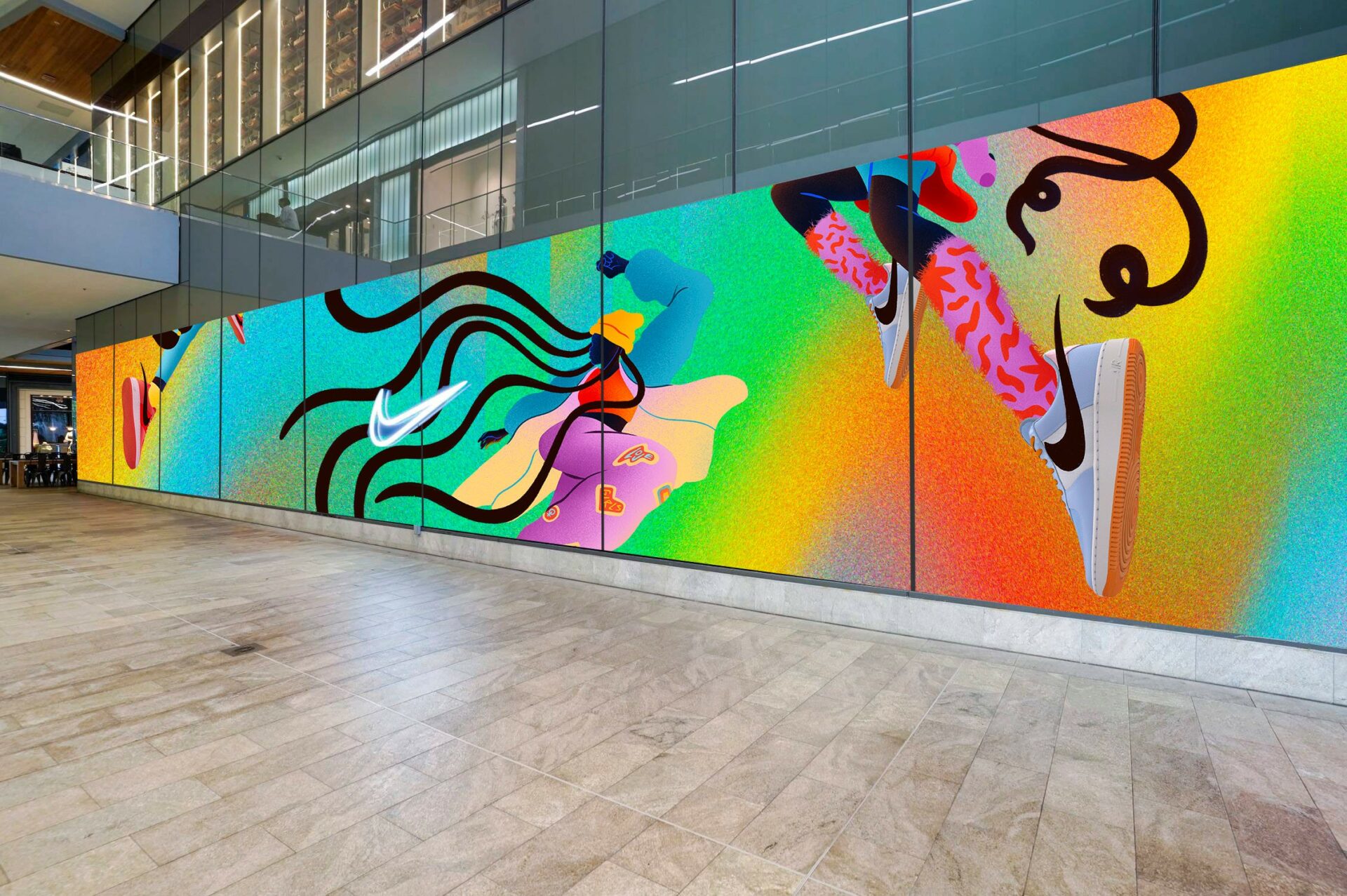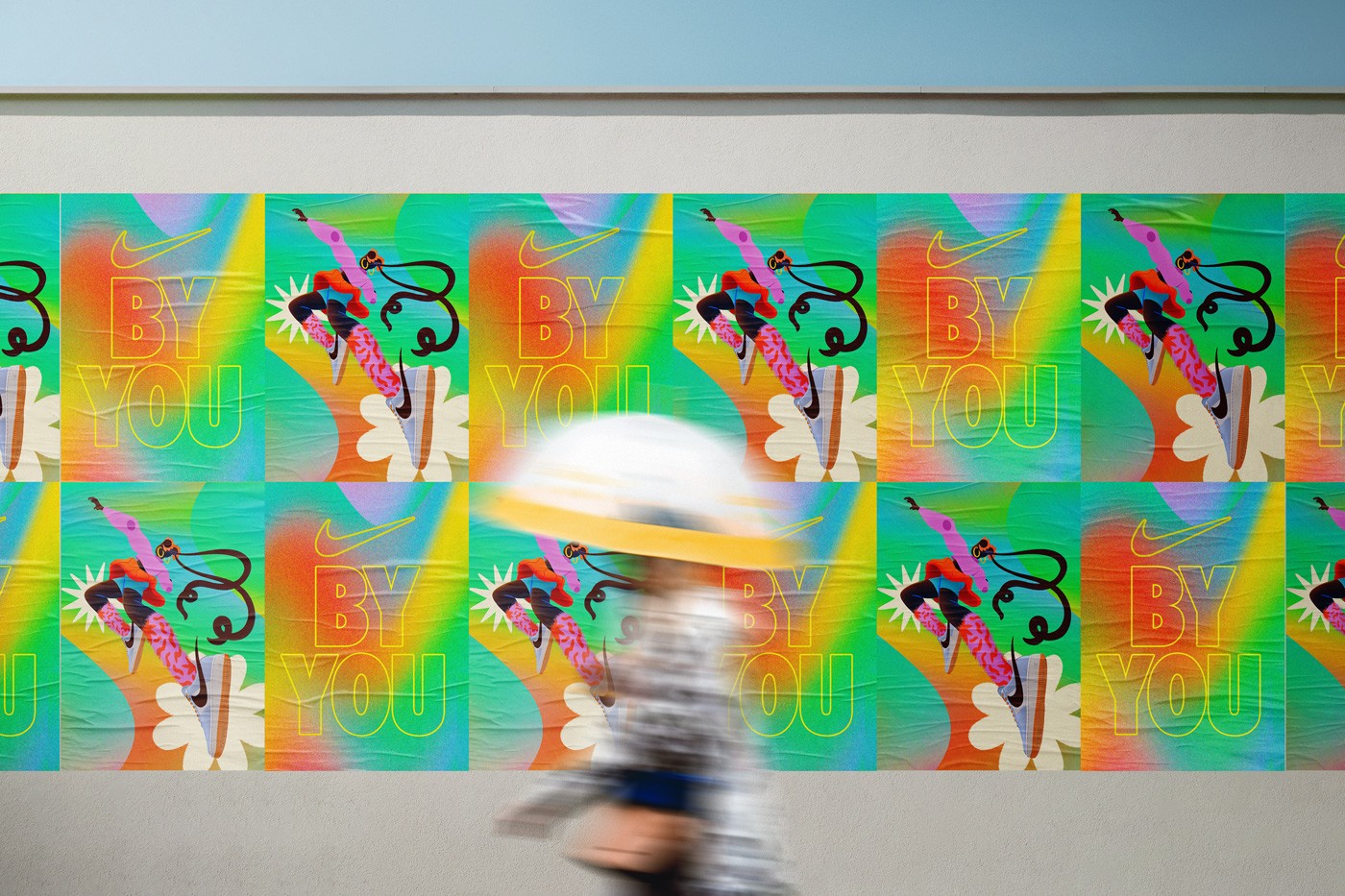We were lucky to catch up with Mickt Flior recently and have shared our conversation below.
Hi Mickt, so excited to talk about all sorts of important topics with you today. The first one we want to jump into is about being the only one in the room – for some that’s being the only person of color or the only non-native English speaker or the only non-MBA, etc Can you talk to us about how you have managed to be successful even when you were the only one in the room that looked like you?
As a BIPOC woman illustrator and designer with many years of experience in the USA and international markets, I’ve been the “only person in the room” multiple times. Uncountable times. As a matter of fact, I still am.
The things that made me the “only person in the room” ever since childhood were primarily my socioeconomic background (both my parents earned minimum wage for most of their life and struggled financially, but I’ve always attended great schools on the basis of merit scholarships), being a first-generation student (the first of a family to go to college), the first to immigrate across the globe (I currently live in the USA but I’m originally from Brazil), and being the first one to pursue a masters abroad on a full scholarship (I got my graphic and experience design degree from NC State in 2020).
As a foreign designer in the United States, I was often the one trying to push for a more diverse and democratic perspective, trying to stay away from harmful stereotypes when portraying people of different races and backgrounds. Being attentive to bias and gender norms that could be ingrained into copy or visual design that was being developed by my team, where traditional white straight male perspectives were heavily represented.
When you are the only person that looks like you in a decision-making room, you just know it. You’ll know by the ideas being thrown around, by the jokes and topics of interest. By how people approach your race or gender in the work they create. When that happens, just take a moment to acknowledge that your very presence in that situation already validates you as a competent and successful professional. It’s infinitely more difficult for minorities to achieve what the majority does daily. The challenges are many, and you need to remember that you’re already above the curve, just by being where you are now.
Also, being the only person in the room makes you an extremely valid asset for the team because you bring fresh perspectives and opinions that most around you would have never thought about, or have no real expertise in, even if they had taken time to study about it. You’re the expert of your own experiences, as a designer, you’re able to speak to specific audiences from heart to heart. In my case, I identify with immigrant POC women and other minorities all over the globe, so I enjoy telling their stories and representing them in my illustrations whenever possible.
Great, so let’s take a few minutes and cover your story. What should folks know about you and what you do?
My personal approach to illustration stems from UX design practices and focuses on visual storytelling. “I seek to tell compelling and eye-catching stories with my compositions. The question I try to answer with each one of my pieces is: If I’m on the street and saw this illustration on a billboard with the corner of my eye, would I turn around to appreciate it for a while, or would I just walk away? I love my work to be bold, bright, fun, and daring. Those are the things that bring us joy in life.”
I’m a Brazilian illustrator & designer based in North Carolina, USA. Inspired by graphic maximalism and experimental type design, my pieces showcase colorful & bold compositions that jump from the canvas. My portfolio expands from the editorial and publishing industries to advertising & design.
With extensive training and experience as both a graphic designer and artist, I have successfully worked on commercial projects for a diverse client base in the US and abroad. I hold a bachelor’s degree in Graphic Design from the Pontifical Catholic University of Rio de Janeiro, in Brazil; and a master’s degree in Graphic & Experience Design from North Carolina State University, in the US. I’ve also been awarded a full scholarship to study illustration at the Savannah College for Art & Design in 2015.
Although a designer since 2016, In 2020 I’ve decided to go full-time as a freelance independent illustrator and I’ve been focusing on commercial projects, partnering with mid and big brands worldwide. I’m also exploring dynamic organic typography in visual compositions and it has been a lot of fun.
What sets me apart as an illustrator is my ability with creative problem-solving, which is something that many illustrators (who are great at their craft) don’t have because it’s a skill associated with design thinking and complex industry problems. Many times my clients reach out with an idea that’s only in their minds and, as a user experience designer, I’m trained in helping people communicate ideas so that I can build exactly what they need, even if they don’t know what it is yet. I love collaborating with people from different backgrounds to figure out the best way to visually tell a story. With commercial illustration, it’s usually about what it’s being used for, rather than a specific style or medium. Who are the people viewing it and in what context? How are they using your product? What are the things they are looking for, according to their age group, cultural background, and expectations on this experience? I’m great at sketching but I also enjoy digging up on some research to better attend my collaborators.
Many illustrators are masters of a specific tool, but to be successful as an illustrator in the advertising industry, being good at illustration is only 10% of the work. The other 90% is problem-solving and people skills. Knowing how to listen, how to translate the needs of your team in an efficient way, and how to form long-lasting relationships.
Looking back, what do you think were the three qualities, skills, or areas of knowledge that were most impactful in your journey? What advice do you have for folks who are early in their journey in terms of how they can best develop or improve on these?
As I mentioned in my previous answer, the main skills I believe are essential to a great designer/ illustrator are the following: First, communication (with your clients, partners, collaborators, and other creatives); Second, it’s the ability to be humble, be always learning and recognize that you don’t know everything there is to know about design or illustration, and probably never will! (Nobody does, so relax!) Design is all about creative, aesthetically pleasing, and commercially appealing ways to solve problems, or tell a story to an audience. There are numerous ways to achieve that, and that’s the fun of this industry. Third: Needless to say (but I’ll say it anyway), being good at sketching and expressing your ideas visually will help you go a looooong way. You don’t need to be a realistic painter if you don’t think this is for you, but you need to practice creative ways to put ideas on paper. Sketching or doodling, doesn’t matter how it looks, that’s your special and unique style. People are out there looking for it, you just have to find them.
How would you describe your ideal client?
Ideal clients are the ones who want to work with you because they like your visual language and believe your style is good for what they’re looking for, period. There’s no “one ideal” client type.
I’m an artist who focuses on creative brands and commercial illustrated pieces, mainly for advertising and marketing. If my client needs anything along these lines, I can definitely help them.
For the sake of the fun of it, I guess I can share who some of my dream clients would be! I’d love to partner with brands that I personally identify with because I’ve built such a close relationship with their products as a user, that partnering with them would mean that I get to have a say in the design of products I personally love. I always enjoyed how Converse (the official shoe brand every rocker teen had in their wardrobe in the early 2000s!) gets creative with their marketing pieces, and how they speak directly to their audience. It’s one of the reasons why their shoes have been around for so long, and even the original styles are still relevant among the youth. It would be a dream come true to be able to develop a colorful limited series of illustrated high-top shoes! Those are my favorites.
Contact Info:
- Website: https://www.behance.net/micktflior
- Instagram: https://www.instagram.com/artsymickt/
- Linkedin: https://www.linkedin.com/in/micktflior/

